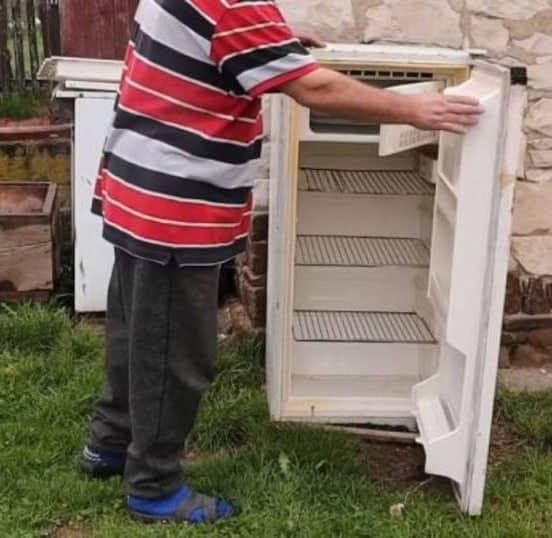At first glance, I couldn’t help but chuckle when I saw the old refrigerator sitting by the trash in my neighbor’s yard. It looked like something straight out of a junkyard—rusty, outdated, and completely out of place. But the moment I walked by and caught a whiff of what was coming from it, I stopped in my tracks.

The warm, sweet smell of dried fruit and herbs drifted into the air, and I immediately realized this was no ordinary discarded appliance. Curious, I wandered closer and was shocked to discover that my neighbor had transformed the old fridge into a fully functioning solar food dryer. The best part? It wasn’t just a quirky backyard experiment—it actually worked. Within minutes of seeing the transformation, I rushed back home, determined to find an old fridge of my own and give it a new lease on life.
If you’ve got an old refrigerator collecting dust in your garage or taking up space at a junkyard, don’t throw it away just yet. With a little effort and creativity, that clunky appliance can become one of the most useful tools in your garden or country house setup. This DIY project is not only environmentally friendly by recycling old materials, but it also gives you an incredibly practical way to preserve fruits, vegetables, herbs, meat, and more—all without electricity. To get started, you’ll first need to strip down the fridge. Remove all the internal parts—shelves, drawers, and especially the freezer unit.
You want to be left with just the outer shell and the door. Cut a hole where the freezer once was to ensure there’s enough airflow inside, which is essential for proper drying. Then, drill a small hole at the base of the fridge for drainage and ventilation. This helps with temperature control and ensures the air inside keeps circulating properly. Next, you’ll want to remove all the insulation material from the fridge’s inner walls. While insulation might be great for keeping things cold, it’s not ideal for a solar dryer where you need heat to build up and escape efficiently. Once that’s done, it’s time to get creative with the door.
Don’t remove it entirely—instead, cut a rectangular opening in it and install a sheet of glass. This glass panel will act like a greenhouse window, trapping solar heat inside while still allowing you to peek in to monitor the drying process. Secure the glass in place using foam sealant, and for extra durability, lightly melt the foam with a blowtorch to lock everything in. The final step is crucial: covering all the newly cut openings with a fine metal mesh. This mesh allows air to move through freely, creating the perfect environment for solar drying. At the same time, it keeps out flies, bugs, and curious critters that might be drawn to the smell of drying food. Once assembled, place your homemade solar dryer in a sunny spot in your backyard or garden. During warm weather, the inside of the fridge will heat up quickly, creating the ideal conditions to slowly and naturally dehydrate your food. Whether you’re drying apple slices, tomatoes, herbs, jerky, or even fish, the results are consistent, safe, and free of artificial preservatives. Plus, you’re using zero electricity in the process, which means this setup is not only sustainable but also budget-friendly. It’s amazing how a piece of junk many people would overlook can turn into something this practical. What once was destined for the landfill now serves a whole new purpose, helping preserve homegrown produce and reducing waste. My neighbor’s creativity didn’t just solve a personal problem—it inspired me and others in the community to look at old things in a new way. So if you spot an abandoned refrigerator sitting around, think twice before passing it by. With just a bit of time and effort, you can turn it into the ultimate solar dryer and maybe even start a new trend in your neighborhood.





